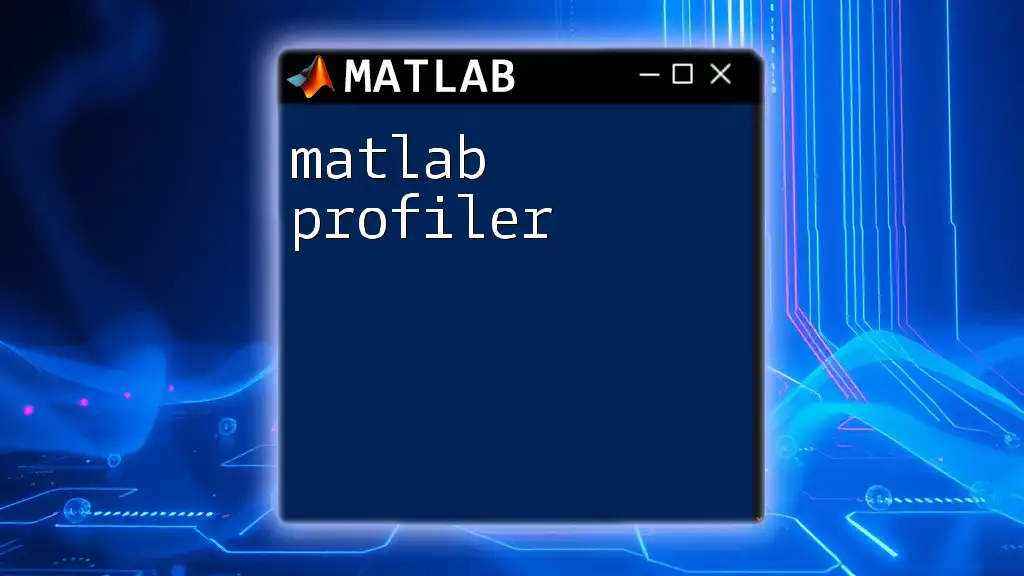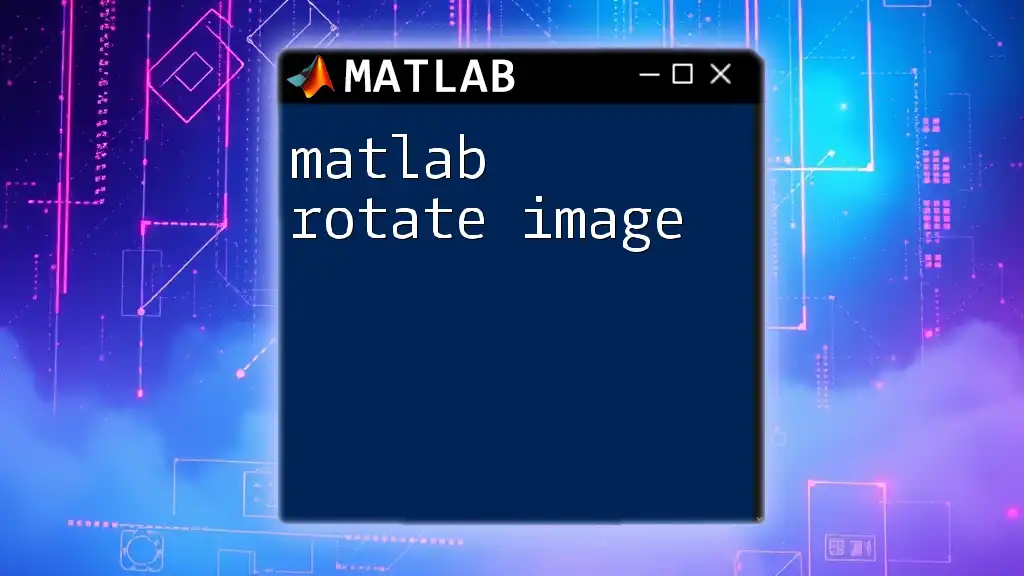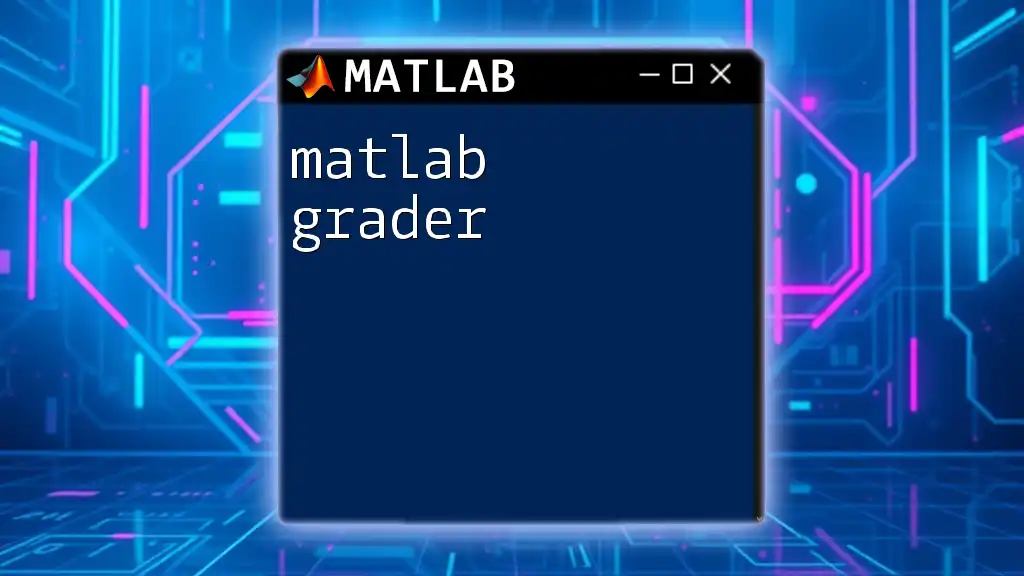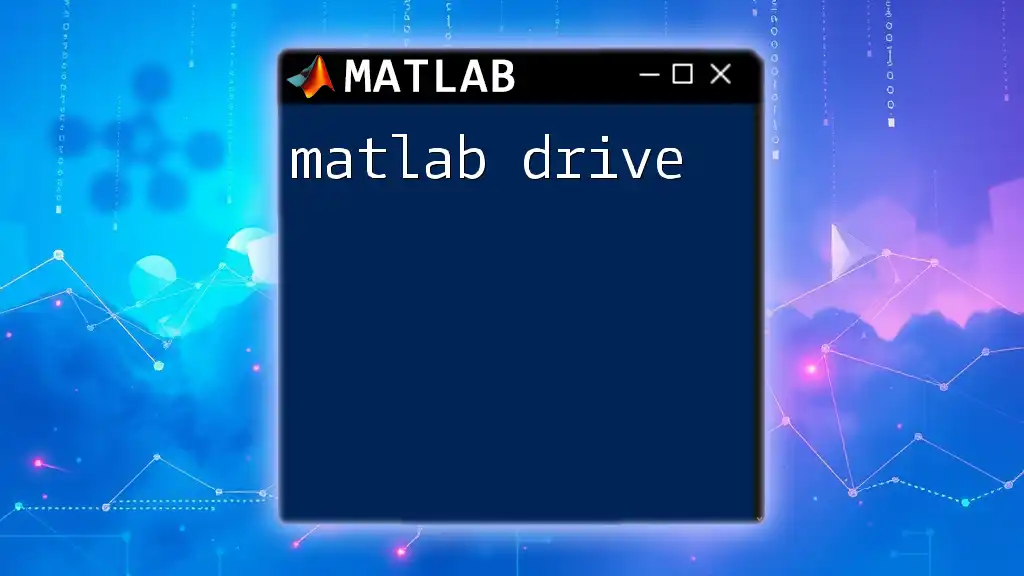The MATLAB command for cropping an image allows users to specify the region of interest by defining a rectangular area, effectively extracting that portion from the original image. Here's a simple example to crop an image using MATLAB:
img = imread('image.jpg'); % Read the image
cropped_img = imcrop(img); % Crop the image interactively
imshow(cropped_img); % Display the cropped image
Understanding Image Data in MATLAB
What is an Image in MATLAB?
In MATLAB, images are represented as matrices where each element corresponds to pixel values. For example, a grayscale image can be represented as a two-dimensional matrix, where each entry contains intensity values (usually from 0 to 255). An RGB image, on the other hand, is represented as a three-dimensional matrix, where the third dimension consists of three layers (red, green, and blue).
How to Read an Image in MATLAB
To work with images in MATLAB, you first need to load them into the environment. This can be done using the `imread()` function, which reads an image file and returns an array containing the pixel data.
Here’s a simple example to read and display an image:
img = imread('example.jpg');
imshow(img);
This code loads an image named `example.jpg` and displays it using `imshow()`. The `imshow()` function scales the data to fit the figure, making it easier to visualize.

The Basics of Cropping Images
What is Image Cropping?
Cropping an image is the process of removing unwanted outer areas from an image. This technique is vital in various applications, including preparing images for presentations, enhancing specific features, or focusing on particular data in research. By cropping images, you can improve both clarity and effectiveness in visual communication.
Methods to Crop Images in MATLAB
Crop Using Indexing
One of the most straightforward ways to crop an image in MATLAB is by directly using matrix indexing. This method allows you to specify a rectangular region of the image based on its pixel coordinates.
For example, if you want to crop an image to focus on a specific section, you can use:
croppedImg = img(50:150, 100:200, :);
imshow(croppedImg);
In this code, we are selecting rows from 50 to 150 and columns from 100 to 200 while keeping all color channels (denoted by `:`). This will extract a rectangular section from the original image.
Crop Using `imcrop()`
Another versatile approach for cropping images is using the `imcrop()` function, which allows for more interactive cropping. This function enables users to define a rectangle on the displayed image manually.
Here’s how to utilize `imcrop()`:
figure;
imshow(img);
rect = getrect; % User draws rectangle on the image
croppedImg = imcrop(img, rect);
imshow(croppedImg);
In this example, we first display the original image. The `getrect` function allows the user to click and drag to create a rectangle over the image. The `imcrop()` function then takes this rectangle (defined by its position and size) and crops the image accordingly.
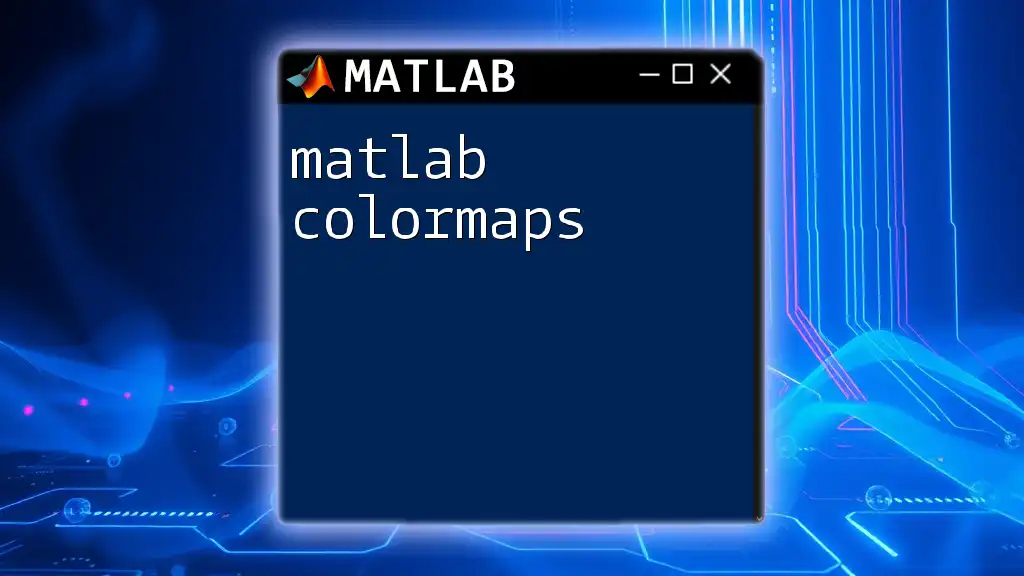
Advanced Image Cropping Techniques
Cropping with Mouse Interaction
The `imcrop()` function is particularly useful when you want more precision, allowing users to interactively select the area they want to crop. While it simplifies cropping, it's crucial to understand how the coordinate system operates in MATLAB, with the origin point (0, 0) at the top-left corner. This makes it easier to visually select areas for cropping without needing to calculate exact indices manually.
Using Logical Indexing for Cropping
Logical indexing is a powerful technique that allows you to create a binary mask based on certain conditions. This method can be particularly useful when you want to crop image regions based on specific criteria, such as color or intensity.
For example, consider the following code to enhance contrast based on pixel intensity:
mask = img(:,:,1) > 100; % Example condition for an RGB image
croppedImg = img(mask);
imshow(croppedImg);
This snippet creates a binary mask where pixels in the red channel that have a value greater than 100 are marked as `true`. When we use this mask to crop, it effectively filters out the regions based on the defined condition, extracting specific areas that meet the criteria.

Practical Applications of Cropping Images
Case Study: Cropping in Medical Imaging
In medical imaging, cropping is often performed to analyze specific regions of interest (ROI) in diagnostic scans, such as MRI or CT images. Cropping allows healthcare professionals to focus on anomalies or critical areas without the distraction of surrounding, irrelevant data. For instance, using MATLAB to crop a slice of a medical scan can provide insights that might be missed if the entire image is analyzed.
By employing precise cropping techniques, MATLAB users can segment images dynamically, facilitating better assessments and quicker decision-making.
Cropping for Data Augmentation in Machine Learning
In the field of machine learning, particularly in image classification tasks, cropped images can serve as an essential tool in data augmentation. By diversifying the dataset through various cropped variations, models can learn to generalize better, leading to improved performance.
For example, when training a convolutional neural network (CNN), cropping different regions of the same image can help the model become more invariant to object location and scale, ultimately resulting in a more robust classifier.

Troubleshooting Common Issues
Common Errors When Cropping Images
When cropping images in MATLAB, users often encounter common issues such as dimension mismatches or attempting to crop outside the bounds of the image array. To mitigate these problems, ensure that the specified indices remain within the size of the original image matrix.
Tips to Improve Cropping Efficiency
To maintain an aspect ratio during cropping, it’s useful to specify proportional dimensions while using indexing or `imcrop()`. Always consider the purpose of cropping—whether for analysis, presentation, or model training—to make informed decisions about the regions to select. If working with large datasets, consider automating the cropping process through scripts to enhance efficiency significantly.

Conclusion
In summary, the process of cropping an image using MATLAB is simple yet incredibly powerful. By understanding the different techniques available and how to implement them, you can greatly improve the quality and relevance of your visual data. Whether in research, medical imaging, or machine learning tasks, mastering how to manipulate images through cropping will enhance both your expertise and your outcomes in image processing.

Additional Resources
Useful MATLAB Functions
A few additional functions related to image processing include:
- `imresize()`: To resize images while maintaining quality
- `imrotate()`: To rotate images accordingly
Further Learning
Consider exploring MATLAB’s comprehensive documentation, online tutorials, and community forums to expand your knowledge further into image processing and MATLAB commands.
FAQs
Be sure to look up common queries regarding cropping in MATLAB. From troubleshooting tips to advanced techniques, these resources can provide invaluable assistance.

Call to Action
For those eager to dive deeper, we invite you to join our upcoming MATLAB workshop, where you'll gain hands-on experience and insights into mastering MATLAB commands. Sign up for our newsletter to receive updates on future tutorials and training sessions!









